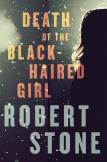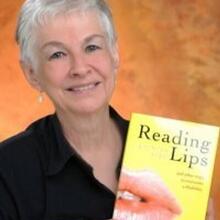The Costs of Belief
A lapsed Catholic, Robert Stone considers his loss of religion one of the pivotal events of his life. If nothing else, it provides inspiration for his award-winning fiction and for the religious impulse behind his work. In his eighth novel, Death of the Black-Haired Girl, religion shapes the lives and aspirations of the main characters but not in ways one would expect.
Winner of the National Book Award for Dog Soldiers (1974), finalist for the Pulitzer Prize and recipient of numerous awards, Robert Stone is considered one of America’s greatest living authors. But one would not have predicted his success from his upbringing. Yet if there’s an underlying truth to Stone’s life and work, it is that what goes around, comes around.
Abandoned by his father, Stone was raised by his schizophrenic mother. Because she was often hospitalized, he spent much of his early childhood in an orphanage run by the Marists. He also attended a Marist elementary school and high school where, as he said in an interview, he learned to read and write and would later earn writing awards.
At 17, Stone rejected Catholicism because of its dogmatic nature—at least as Stone saw it. He became a militant atheist and was expelled from school. After passing a high school equivalency test, he joined the Navy and took up journalism. Later, he studied at New York University, then Stanford, where he began writing his first novel, the bestselling Hall of Mirrors (1967).
Stone would reconnect to his spiritual side at Stanford while working on his master’s degree and taking LSD as one of Ken Kesey’s Merry Pranksters. What he found, though, was less the person of Jesus Christ whom he had come to know (and reject) in the Catholic Church and more of a presence. As he explained it in an interview, he witnessed “an enormously powerful, resolving presence within which all phenomenology was contained…. In spite of all the horrors, way down deep, everything was all right….” This sense of a resolving presence resonates in Stone’s novels. They deal with many of the concerns that Stone himself has grappled with—including drugs, mental illness, the problem of evil, the existence of a caring God and the teachings of the Catholic Church.
Now, with Death, 76-year-old Stone continues mining the territory—although in a shorter and less-realized form. Caught in a morally ambiguous universe, the characters search for the meaning of life while hoping—but not necessarily believing—that their lives have a meaning.
Set on the campus of an elite liberal arts college in New England, the novel is both a mystery and a meaning-of-life story. The mystery—who killed the black-haired girl and why—provides the background for a look at philosophical and ethical issues.
The first half of the story is somewhat slow. The characters are hastily sketched, and the prose seems heavy with catch-all phrases and inside jokes whose point never quite comes through. Instead of a protagonist, there are several central characters, among them Jo Carr, the college councilor.
Carr, who is the most fully realized of the characters, tries to help Maud Stack (the black-haired girl of the title) survive in a world where immediate gratification is the order of the day. Carr, though, vows to use a scrupulously nonreligious approach to counseling. But that’s difficult for a former missionary nun. One of the most powerful scenes in the story occurs when Carr forgets herself and, while visiting a patient in the hospital, offers to baptize him, then realizes “that the sacrament would lay him down and out and break him in half.”
Carr left her religious order partly because she believed that the Catholic Church did not do enough for the poor and partly because she was afraid of a renegade priest who has since died. Now, 10 years later, Carr thinks she not only sees the priest (known as The Mourner) but also talks to him. She, who doesn’t believe in visions or in spiritual claptrap, doesn’t know what to think about this turn of events. Her musings and the attention given to her interior life allow her character a depth that the others lack.
The novel provides teasing glimpses into the rest of the characters. These include Maud, a college senior whose problems set the story into motion and who is killed in a hit-and-run accident about halfway into the novel; Professor Steve Brookman, Maud’s faculty advisor, who is also her lover; and Eddie Stack, Maud’s father, who is a retired policeman.
Maud skewers a group of pro-life demonstrators in a newspaper article with photographs of malformed fetuses. Her thought—“no offense intended…to the Holy Romantic Megachurch itself”—is that abortion is no big deal. Nature/God is the “Abortionist” par excellence.
But Maud is offensive. Her language is inflammatory, blasphemous and so overdone that at times it’s almost funny (at least to this reader). Unfortunately, the small college town of Amesbury has more than its share of religious crazies. Unfortunately also, Maud is quarreling with Steve Brookman, who wants to end their relationship and, in a fit of irritation, refuses to check the suitability of Maud’s article.
So her story is published, and the plot becomes decidedly more interesting. After Maud is killed, the townspeople think the perpetrator is one of the crazies. There are several suspects. One is the schizophrenic John Clammer, a vociferous anti-abortionist who wanders in and out of mental hospitals and is fond of quoting lines from Francis Thompson’s “The Hound of Heaven.”
And there’s Professor Brookman. Brookman is seen arguing with a drunken and visibly upset Maud, who has come to his house in order to have it out with him. As the shouting match ensues, some believe that Brookman pushes Maud into the path of an oncoming car.
Ethical questions attempt to hold the novel together. What is the proper relationship between teachers and students, between spouses and between fathers and daughters? What are the kinds of love? Does mankind’s suffering have meaning? There’s even concern with liberation theology, the post-Vatican II church, as well as the correctness of conservative versus liberal thinking in the Catholic Church, which never looks very good in this story with “all the...slobbering priests.”
Maud, Eddie and Carr are fallen-away Catholics. Maud detests anything connected to her former religion. Eddie, who lost his faith after his wife died, is furious with the pig-headed monsignor (as Stone portrays him) who won’t allow Maud’s ashes to be placed beside her mother’s, presumably because of Maud’s blasphemous article. Everyone, it seems, is angry with the church, although in Carr’s case the anger is more a lover’s quarrel. The church infuriates her, but she can’t get away from it. Neither, apparently, can Robert Stone.
Ultimately, it is Carr’s perspective that gives rise to the force that drives this novel. As Stone puts it describing one of Carr’s introspective moments, “The effort of belief, the replacement of it with sheer terror and a sense of what she thought of as her own cowardice, had cost her.” In one way or another, belief or the lack of it costs every character here, and they pay the price. As they do so, the plot—while never a page-turner—carries the story to a mostly satisfying conclusion.
This article also appeared in print, under the headline “The Costs of Belief,” in the April 21, 2014, issue.








